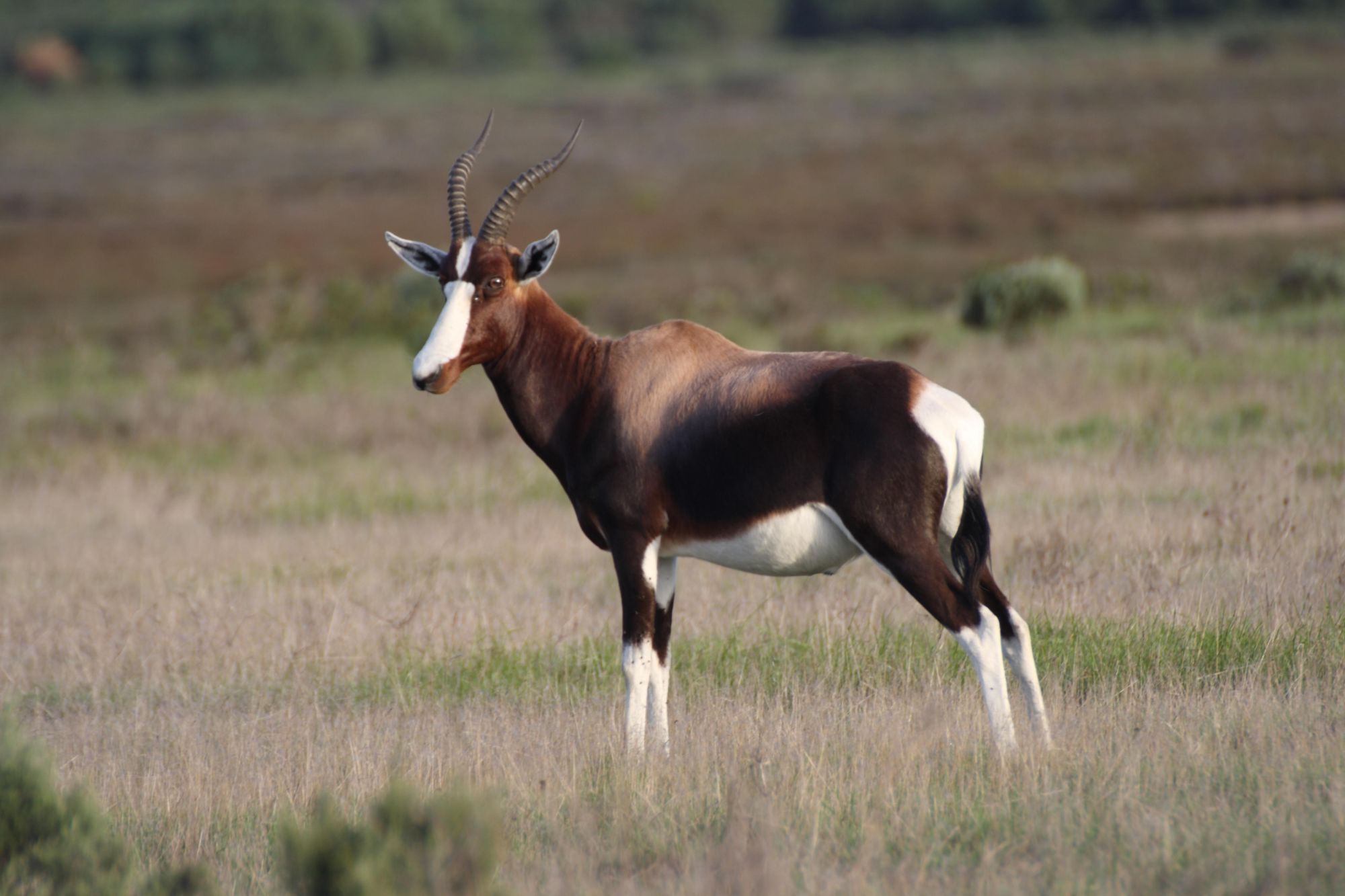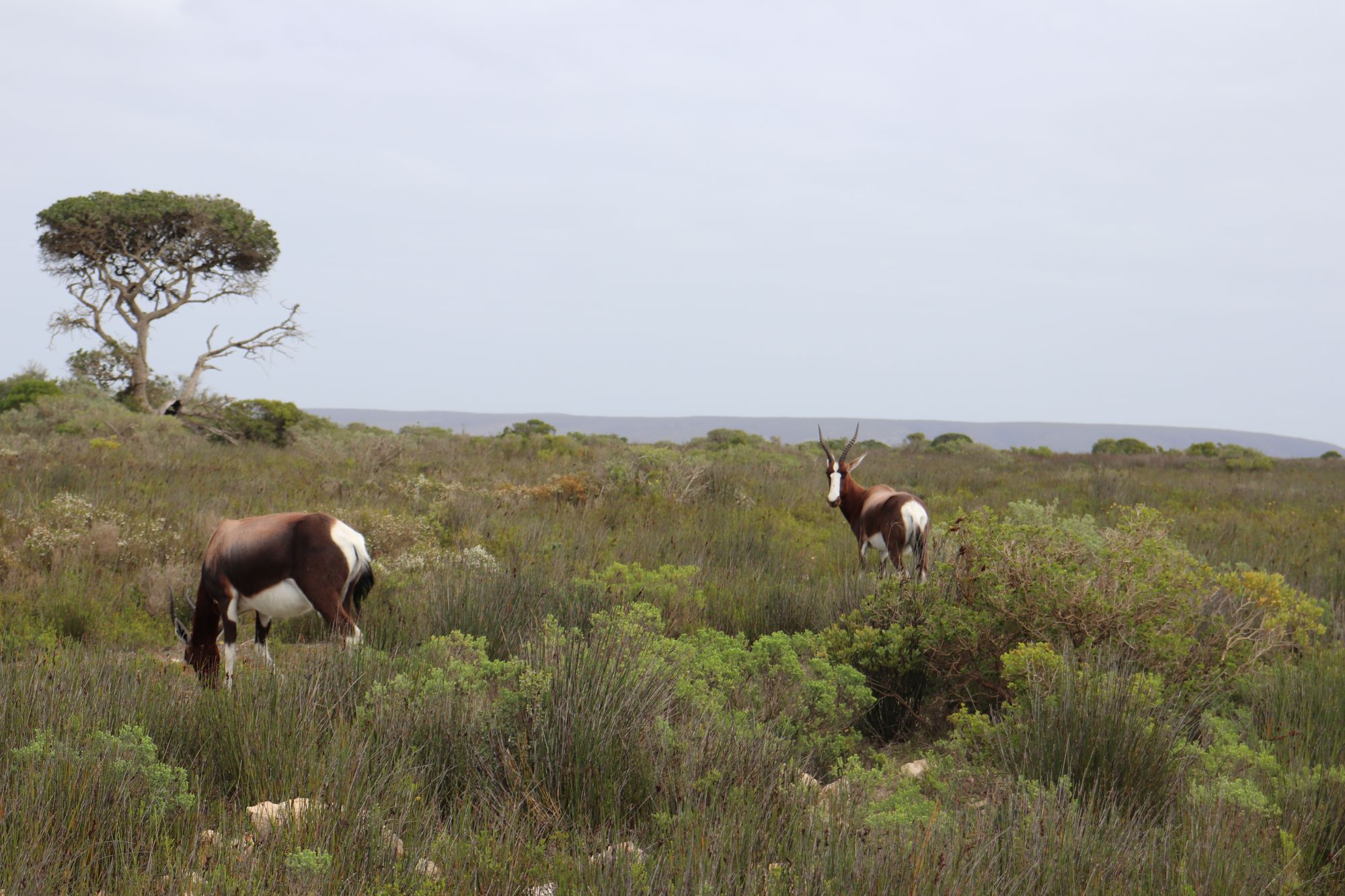
The bontebok - a species saved from the brink of extinction
By Nicole Horn, Biodiversity Capabilities
The bontebok - a likable, medium sized antelope with a multi-coloured coat and endemic to the Western Cape, is listed as Vulnerable in the International Union for Conservation of Nature Red List of Threatened Species. It was once on the brink of extinction due to hunting, human settlement and incorrect breeding practices. In the 1930s the species reached a critical low, with an estimate of 17 bontebok remaining.

Bontebok (Damaliscus pygargus pygargus) and blesbok (Damaliscus pygargus phillipsi) originated from the same species, Damaliscus pygargus. Fossil records show that D. pygargus split into two distinct sub-species which were adapted to different habitats and therefore different distributions. The blesbok’s original range included the grasslands of Gauteng, Eastern Cape, Mpumalanga and Free state, whereas bontebok were restricted to the coastal plains in the southern Cape Floral Region. Although they look very similar, they have different behavioural and morphological traits as well. Historically the two sub-species were easily mistaken for one another contributing to the near extinction of the bontebok. Translocations and the keeping of both blesbok and bontebok on the same properties resulted in hybridization, threatening the bontebok’s genetic integrity. There were also fewer bontebok than blesbok, making the former more susceptible to threats.

The bontebok was rescued from the brink of extinction, when Bredaspdorp farmers started to breed with the species ultimately leading to the establishment of the Bontebok National Park (BNP) in the Bredasdorp area in 1931. This helped increase the numbers of bontebok, but due to the unsuitability of this habitat some bontebok were sent to Grahamstown to establish a new population on a farm called Thornkloof. Later, the BNP was established just outside Swellendam where it is currently situated. Bontebok from the original park were translocated to the new park along with a few from the Thornkloof farm. A few of the Thornkloof farm bontebok were sent to the De Hoop Nature Reserve and the then Cape Point Nature reserve (Table Mountain National Park).
Today the bontebok occurs in small isolated populations and is threatened by low genetic diversity, population fragmentation, habitat fragmentation and hybridization. Most of the vegetation types that constituted the bontebok’s original habitat are classified as Vulnerable, Endangered or Critically Endangered, resulting in 70% of the habitat being threatened. Only <10% of the original extent of renosterveld within the natural distribution range of the bontebok still remains. The bontebok is recognised as an iconic flagship species for the protection and conservation of the renosterveld vegetation. A species management plan has been compiled for the species stipulating actions to conserve both the bontebok as well as the critically endangered renosterveld vegetation type where they naturally occur.
Today the future of the bontebok looks a lot brighter due to the collaborative efforts made by CapeNature, the Department of Environmental Affairs, South African National Biodiversity Institute and South African National Parks to name a few.




